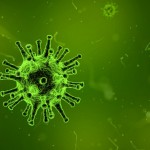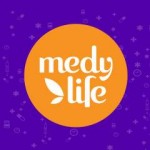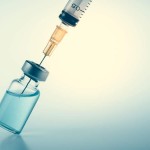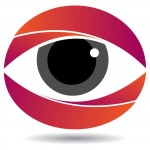Myocardial Infarction (Heart Attack)
Myocardial Infarction(MI) also known as heart attack is one of the most common non-communicable diseases/ chronic diseases, which cannot be transmitted from person to person. It gradually progresses and affects the bloody supply to heart.
A myocardial infarction is a serious medical emergency that occurs due to the blockage of one of the arteries which is supplying blood to the heart . Due to which ,lack of oxygen to heart causes characteristic chest pain and death of myocardial tissue.
Symptoms
Generally, symptoms appear gradually. Chest pain is the most common symptom of acute myocardial infarction.
It is often associated with
Sensation of tightness
Pressure
Squeezing
Pain generally radiates to the left arm, but may also radiate to the lower jaw, neck, right arm, back, and epigastrium , where it may mimic heartburn.
Levine's sign, in which the patient localizes the chest pain by clenching his fist over the sternum, has been thought to be predictive of cardiac chest pain.
Others symptoms include:
Shortness of breath
Anxiety
Coughing
Wheezing
Causes
Rate of heart attacks is generally higher with intense exertion, it can be also be due to psychological stress or physical exertion.
Risk factors associated with MI are:
Age: With the increasing age chances of heart attack also increases
Gender: Men are more at risk than women
Diabetes mellitus (type 1 or 2)
High blood pressure
Dyslipidemia/hypercholesterolemia (abnormal levels of lipoproteins in the blood), particularly high low-density lipoprotein, low high-density lipoprotein and high triglycerides
Tobacco smoking, including passive smoking
Family history of heart disease or myocardial infarction particularly if one has a first-degree relative (father, brother, mother, sister)
Lack of physical activity
Alcohol — Studies show that prolonged exposure to high quantities of alcohol can increase the risk of heart attack.
Oral contraceptive pill – Women who use combined oral contraceptive pills are at an increase risk of myocardial infarction, especially in the presence of other risk factors, such as smoking
Diagnosis
According to the WHO criteria as revised in 2000, a cardiac troponin rise accompanied by either typical symptoms, pathological Q waves, ST elevation or depression or coronary intervention are diagnostic of MI.
Physical examination
The appearance of patients may vary according to the symptoms A cold and pale skin is common and points to vasoconstriction. Some patients have low-grade fever (38–39 °C). Blood pressure may be elevated or decreased, and the pulse can become irregular.
Electrocardiogram (ECG)
12-lead electrocardiogram showing ST-segment elevation in I and V1-V5 with reciprocal changes (blue) in the inferior leads, indicative of an anterior wall myocardial infarction. The 12 lead ECG is used to classify patients into one of three groups:
Those with ST segment elevation or new bundle branch block
Those with ST segment depression or T wave inversion (suspicious for ischemia), and
Those with a so-called non-diagnostic or normal ECG. A normal ECG does not rule out acute myocardial infarction.
Errors in interpretation are relatively common, and the failure to identify high risk features has a negative effect on the quality of patient care.
Cardiac markers
Cardiac markers or cardiac enzymes are proteins that leak out of injured myocardial cells through their damaged cell membranes into the bloodstream. The markers most widely used in detection of MI are the enzyme creatine kinase and cardiac troponins T and I as they are more specific for myocardial injury. The cardiac troponins T and I which are released within 4–6 hours of an attack of MI and remain elevated for up to 2 weeks, have nearly complete tissue specificity and are now the preferred markers for assessing myocardial damage. The diagnosis of myocardial infarction requires two out of three components (history, ECG, and enzymes). When damage to the heart occurs, levels of cardiac markers rise over time.
Angiography
To restore blood flow, coronary angiography can be performed. A catheter is inserted into an artery (usually the femoral artery) and pushed to the vessels supplying the heart. A radio-opaque dye is administered through the catheter and a sequence of x-rays (fluoroscopy) is performed. Obstructed or narrowed arteries can be identified, and angioplasty applied as a therapeutic measure. Angioplasty requires extensive skill, especially in emergency settings. It is performed by a physician trained in interventional cardiology.
Exercise stress test
Measures heart rate while patient walks on a treadmill. This helps to determine how well heart is working when it has to pump more blood.
Doppler test
A Doppler test uses reflected sound waves to see how blood flows through a blood vessel. It helps doctors evaluate blood flow through major arteries and veins, such as those of the arms, legs, and neck. It can show blocked or reduced blood flow through narrowing in the major arteries of the neck that may cause infarction.
NHP provides indicative information for better understanding of health. For any diagnosis and treatment purpose you should consult your physician.
Treatments
Oxygen and aspirin are usually administered as soon as possible.
Anti platelets agents:
Drugs like aspirin has been shown to markedly reduce mortality and thus should be taken as soon as possible in those without an allergy to it
Coronary angioplasty:
In coronary angioplasty, a tiny tube known as a catheter, with a sausage-shaped balloon at the end, is put into a large artery groin or arm. The catheter is passed through blood vessels and up to heart, over a fine guide wire, using X-rays to guide it, before being moved into the narrowed section of your coronary artery. Once in position, the balloon is inflated inside the narrowed part of the artery to open it wide. A stent (flexible metal mesh) is usually inserted into the artery to help keep it open afterwards.
Thrombolysis:
Thrombolysis involves giving injections which contain thrombolytics. Thrombolytics target and destroy a substance called fibrin. Fibrin is a tough protein that makes up blood clots by acting like a sort of fibre mesh that hardens around the blood. Thrombolytic medications used in the treatment of heart attacks include reteplase, alteplase and streptokinase.
Complications
Arrhythmia
An arrhythmia is an abnormal heartbeat, such as beating too quickly (tachycardia), too slowly (bradycardia) or irregularly (atrial fibrillation). Arrhythmias can develop after a heart attack as a result of damage to the muscles. Damaged muscles disrupt electrical signals used by the body to control the heart.
Heart rupture
A heart rupture is a serious and relatively common complication of heart attacks.A heart rupture is where the heart’s muscles, walls, or valves rupture (split apart). A rupture can occur if the heart is significantly damaged during a heart attack. It usually happens one to five days after a heart attack.
Heart failure
Heart failure is a condition in which heart is unable to effectively pump blood around body. It can develop after a heart attack if muscles in heart are extensively damaged. This usually occurs in the left side of the heart (the left ventricle).
Cardiogenic shock
Cardiogenic shock is similar to heart failure but more serious. It develops when the heart’s muscles have been damaged so extensively that it can no longer supply enough blood to maintain many of the functions of the body.
References:
WHO
U S National Library of Medicine
NHS







